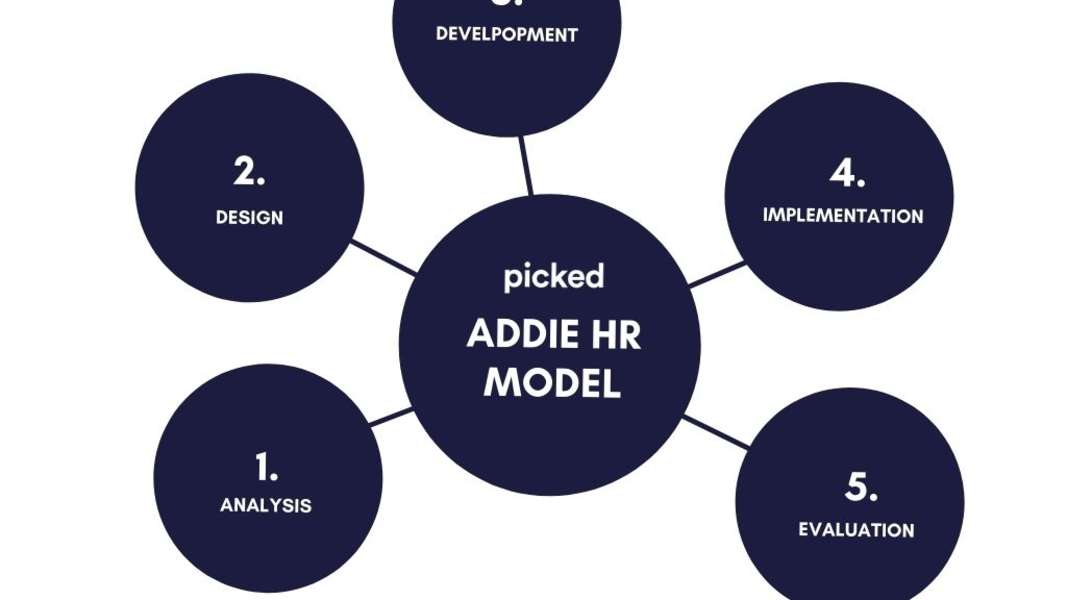
What Is the Addie Model In HR Management?
September 09, 2022

What is the Addie Model?
The Addie Model is a human resources management framework that provides a structure for diagnosing and addressing HR issues.
The model centers on five key areas: ability, motivation, role, environment, and knowledge.
By understanding how these factors interact, HR managers can identify the goals of their organization, assess their current workforce capabilities, and develop strategies for improving workforce productivity as well as create an environment in which employees can be successful
Who created the model?
The Addie HR model is a human resources management model that was created by the American Management Association (AMA).
The AMA is a not-for-profit organization that provides management training and development services.
The Addie HR model is based on the premise that effective human resources management can help organizations achieve their strategic objectives.
The model consists of five stages: planning, recruiting and selecting employees, orienting and training employees, managing employee performance, and rewarding and retaining employees.
How can you use the Addie Model in your organization?
The Addie Model can be used in a variety of ways to improve organizational performance. For example, it can be used to:
- Evaluate the effectiveness of current employee policies and programs
- Identify areas where workforce productivity could be improved
- Assess the skills and capabilities of the workforce
- Develop training and development programs for employees
- Identify potential skill shortages within the organization
How does the Addie Model work?
The Addie Model is a simple, yet effective way to help manage and track employee productivity.
The five steps of the Addie Model
1. Analysis
The first step in the ADDIE Model is analysis.
This step is important because it helps identify the needs of the learners and the objectives of the training program. This information is used to create a needs analysis report which forms the basis for the rest of the instructional design process.
During this phase, you will examine your audience, your objectives, and the constraints of the project. You will also create a project plan and determine the resources you need to complete the project.
2. Design
The second step is design. In this step, the instructional designer creates a blueprint for the training program. The blueprint includes an outline of what will be covered in each lesson and how it will be presented.
3. Development
The development phase is the third phase of the Addie Model and arguably the most important phase as it is during this phase that the actual instructional materials are created.
The development phase begins with a prototype or draft of the proposed instructional materials which are then field-tested and revised based on feedback before being finalized for use.
It is important to note that the other phases of the Addie Model (analysis, design, implementation, and evaluation) are not necessarily linear and may be revisited during any stage of the instructional design process.
4. Implementation
The fourth step is implementation. In this step, the training program is put into action and delivered to the learners.
During the implementation phase, there are a few steps that need to be followed to ensure the successful adoption of the new solution.
First, a pilot test should be conducted with a small group of users to ensure that the solution works as intended. Second, training should be provided to all users on how to use the new solution. Lastly, a rollout plan should be put in place to slowly introduce the new solution to all users.
The implementation phase is critical to the success of any change initiative. By following the steps outlined above, organizations can increase their chances of success and avoid any potential pitfalls.
5. Evaluation
The fifth and final step is evaluation. This step assesses whether or not the training program was effective in meeting its objectives.
To effectively manage and administer employee resources, many organizations use the Addie Model.
The evaluation phase of the Addie model is important because it allows for feedback on the instructional materials that were developed in the previous phases. This feedback can be used to improve the quality of the instructional materials.
The evaluation stage also allows for data collection which can be used to assess the effectiveness of the instruction.
There are two main types of evaluations that can be conducted during this phase: formative and summative. Formative evaluations are conducted during the development and implementation phases and provide information that can be used to improve the quality of the instruction.
Boost your hiring power.
Start using Neuroworx today.
Talk is cheap. We offer a 14-day free trial so you can see our platform for yourselves.
Try for free



